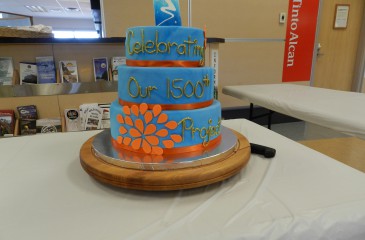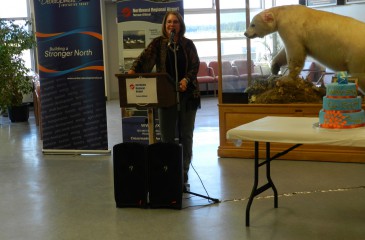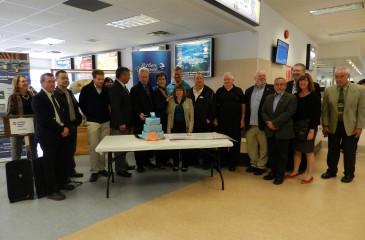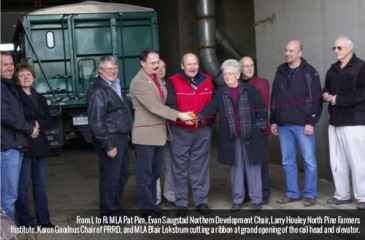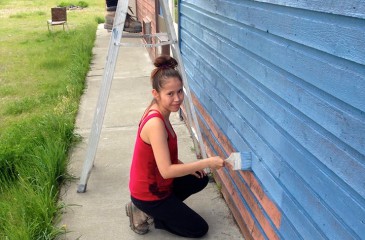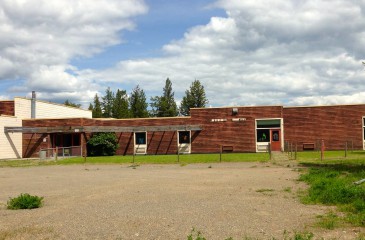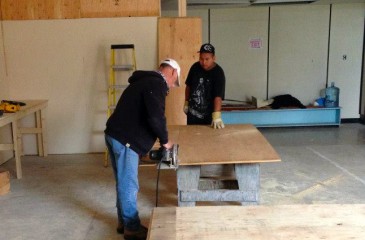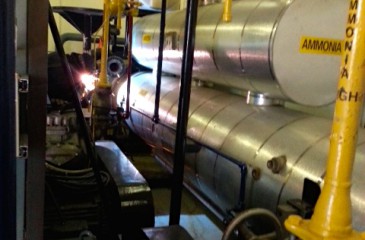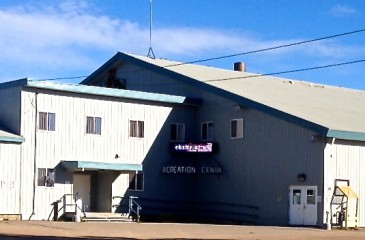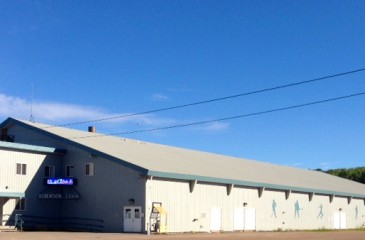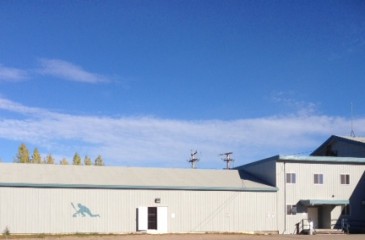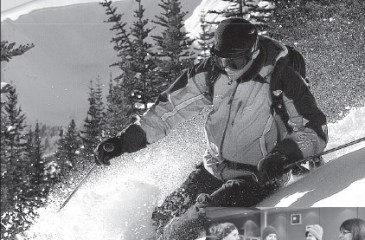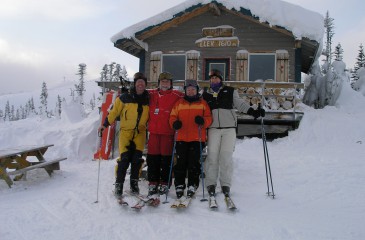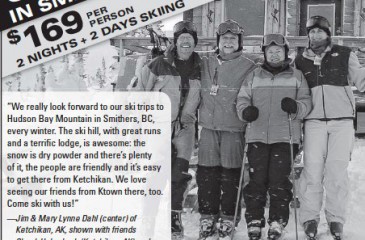With the 1,500th project approved, Northern Development has decided to take a glance back in time to review a few milestone projects that the Trust has supported along the way.
Northern Development Initiative Trust’s board of directors has approved a $250,000 grant to support the development of the Northwest Regional Airport terminal expansion project. This is a significant project that helps to satisfy a growing demand of airport traffic in the Northwest and marks the Trust’s 1500th project approved since inception.
Northern Development Initiative Trust was established in November 2004 by the provincial government, to foster economic development and job creation in central and northern British Columbia. The first project approved through a combination of $195,300 grant and $150,000 loan funded by Northern Development to assist with the construction of the Village of Valemount’s Visitor Information and Interpretive Centre. Since inception, the Trust and its programs have grown and evolved into an asset for economic development in central and northern B.C.
A few milestone projects that Northern Development has contributed funds to over the years include the Northeast Regional Auction Mart, the North Pine Farmers Institute’s acquisition of a rail head and grain elevator and the Anahim Lake Airport Terminal Building.
In 2009, the Dawson Creek Exhibition Association undertook rebuilding their facility with funding support from the Government of Canada’s Community Adjustment Fund delivered by Northern Development Initiative Trust. The project allowed operations to move from the temporary barn to a full production, purpose built auction facility, after the original auction barn was destroyed by fire. The new facility was constructed in three phases including a livestock sales pavilion with offices, concession, bathrooms, bleachers, ring, and livestock scale.
In 2012, the Peace River region was in danger of losing all the grain elevators within the area, which would have had a crippling effect on the ability of farmers in the region to competitively ship their grain. In response to this challenge, the North Pine Farmers Institute acquired a railhead and grain elevator and made extensive improvements and upgrades to the facility on behalf of farmers all over B.C.’s North Peace region. The acquisition of the railhead and grain elevator by the North Pine Farmers Institute created new opportunities for the agricultural industry in the Peace River Region. With reductions in transportation costs associated with the adoption of rail as the primary method of transporting products, farmers can now afford to reinvest more heavily in their farms and the region.
In 2010, the Cariboo Regional District and Northern Development recognized the importance of the Anahim Lake Airport, and partnered with the Provincial program, Towns For Tomorrow on an airport improvement project. This project involved the construction of a timber framed terminal building and paving up to 700 feet of the existing gravel runway. The terminal building helped to improve the service levels at the airport resulting in increased use of the airport by community residents, visitors, tourism operators, medical personnel, the RCMP and other user groups. The paved runway will also allow for safer winter landings and increased passenger carrying capacity year-round.
Previously, Northern Development has supported 19 airport improvement projects with $14 million in funding approved toward $114 million in airport expansions in communities throughout the region including: Bella Coola, Vanderhoof, Burns Lake, Fort St. John, Fort Nelson, Prince George, Masset and the Xeni Gwet’in Community Airport.
Quotes
“Northwest Regional Airport is a crucial access point for passenger and business traffic entering northwest B.C., and these upgrades will improve services at the airport and support major industrial projects that strengthen British Columbia’s economy,” said Gerald Wesley, Vice Chair, Northern Development Initiative Trust. “The Trust is proud to support this exciting project through our Economic Diversification Infrastructure program.”
“Investing in airport infrastructure is essential with a growing economy and especially in the northwest part of our province. I toured the facility this summer and it was experiencing 41 per cent passenger growth thanks to the economic growth in the region. That growth will continue as Terrace and Kitimat benefit from LNG and other natural resources developments making this investment even more critical,” said Shirley Bond, Minister of Jobs, Tourism and Skills Training and Minister Responsible for Labour.
“Communities in northwest British Columbia enjoy strong prospects for significant growth, thanks to natural resource development. Building capacity at the Northwest Regional Airport represents a strategic and timely step forward that will create jobs and drive economic expansion across the region. The Government of British Columbia is proud to support the Northern Development Initiative Trust’s infrastructure investments to help ensure continued prosperity in the North,” said Coralee Oakes, Minister of Community, Sport and Cultural Development.
“Northern Development Initiative Trust’s investment comes at a critical time as Northwest Regional Airport continues to break monthly passenger traffic records. The improvements to our airport will help us better meet the needs of residents and visitors to the region and we appreciate the Trust’s assistance in helping us build the region’s infrastructure,” said Dave Pernarowski, Mayor, City of Terrace.
“On behalf of Kitimat Council and the entire community, I wish to thank the Northern Development Initiative Trust for this $250,000 Economic Diversification Infrastructure grant in support of the Northwest Regional Airport terminal expansion project,” said District of Kitimat Mayor Joanne Monaghan. “This airport is a critical asset for Kitimat and the entire region.”
“This project is crucial in providing the facilities needed to support our region’s economic future,” said Carman Hendry, Manager, Northwest Regional Airport Terrace Kitimat. “The Terrace-Kitimat Airport Society would like to thank the Northern Development initiative Trust’s show of confidence in our success as the Northwest Regional Airport.”
Quick Facts
• Airport passenger traffic at Northwest Regional Airport grew approximately 38% between 2012 and 2013
• In the first six months of 2014, the Trust approved 241 projects and $7,263,971 in funding
• $40.6 million from the four regional development accounts
• $29.4 million from the Cross Regional Account
• $21.9 million from the Pine Beetle Recovery Account
• Additionally, community grant writers have been approved for $84.8 million in funding since 2010
• 2,455 partnerships with 778 organizations have attracted over $1.1 billion in new investment to the region
Contact
Joel McKay
Director, Communications
Northern Development Initiative Trust
joel@northerndevelopment.bc.ca
250-561-2525
Caitlin Hartigan
Manager, Market Development
Northern Development Initiative Trust
caitlin@northerndevelopment.bc.ca
250-561-2525
Carman Hendry
Manager
Northwest Regional Airport Terrace-Kitimat
250-635-2659
